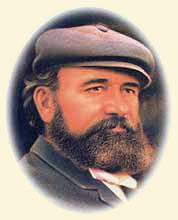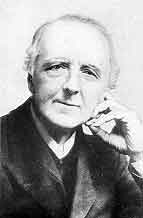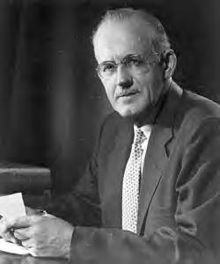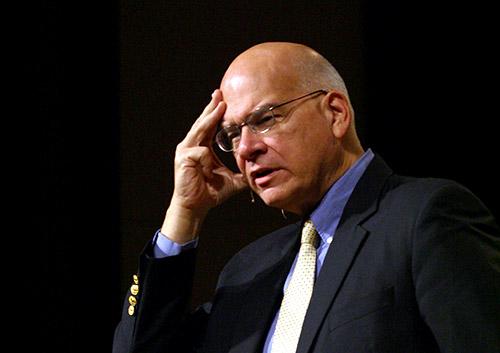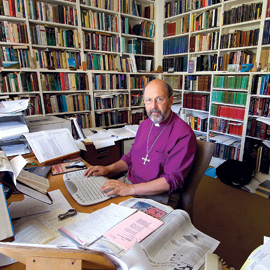 How can a church that has never been involved in church planting become a church-planting church?
How can a church that has never been involved in church planting become a church-planting church?
Many churches aren't sure where to even begin this journey. Some churches dive right into church planting by sending out one of their own. This process usually involves investing a significant amount of resources into the planter and rallying behind him. But this effort often ends poorly as the existing church frequently ends up disillusioned with church planting altogether when their ill-equipped church planter fails.
Sending out a church planter is not the best first step in becoming a church-planting church. This transition takes time. But there is hope! You can't become a church-planting church overnight, so don't be in a hurry. The steps can over time position your church to make a great impact through church planting.
Year 1
Assess and re-define your church missions strategy/philosophy.
Many churches do international missions well. Other churches do local outreach well. But few churches model their missions strategy after the three-fold holistic pattern of Acts 1:8: "But you will receive power when the Holy Spirit has come upon you, and you will be my witnesses in Jerusalem and in all Judea and Samaria, and to the end of the earth."
In Acts 1:8 we see three aspects to church missions:
- Local Missions: Jerusalem—ministry to our city, mercy ministries, local outreach
- Domestic Missions: Judea and Samaria—domestic church planting
- International Missions: To the Ends of the Earth—missions beyond our international borders
Many churches are involved in various parts of these three aspects, but few churches have combined them under one holistic strategy. Does your church value all three of these missions aspects? In order to become a church-planting church, you must believe that church planting is an essential part of what the missions call.
Need more convincing?
Tim Keller has argued that church planting is the most effective evangelistic strategy. Take some time and re-align your church missions strategy to include all three priorities of Acts 1:8.
Allocate a certain percentage of your annual budget for church planting.
Now that you have made a decision to emphasize all three aspects of missions, the next step is to allocate resources for each. How much will be allocated for missions overall? How will this money be split among the three different aspects?
When I was leading Sojourn Network, we encouraged our church plants to allocate 15 percent of their overall budgets to missions—5 percent to each of these three areas. Whatever you decide, keep in mind that there is no such thing as a church-planting church that does not allocate a significant amount of financial resources to this work.
If you accomplish these first two goals in year one, you have made major progress. Once you have finished these first two steps, you can now move on to years two to five.
Years 2 to 5
Partner with other churches in supporting a church planter.
What should you do with your newly freed-up church-planting resources? I suggest at this point partnering with others in supporting a church planter or planters. This process could include:
- A few churches that together collaborate to fully fund a church planter.
- Being a part of an association where you can partner together to support a church planter or planters.
Think of this work as a church planting mutual fund. Rather than trying to fund a church planter by yourself, look to partner in doing so.
Adopt and support an existing church planter.
Alongside step three I also recommend that a church adopt and build a relationship with an existing church planter. This step could coordinate with step three. Here are some ways to proceed:
- Choose a church planter to get behind.
- Offer financial support to that planter.
- Build a relationship with the planter.
- Look for ways to bless him and his family (consider budgeting to bless him and his family monthly in some way).
- Allow the church planter to preach a couple of times per year.
- Keep the church plant in front of your congregation as a part of your missions commitment.
Intentionally build a church-planting ethos in your church.
If your church has not been involved in church planting in the past, it is difficult to become a church-planting church in a year. Many members have no previous exposure to church planting. It takes time to build or change culture. Give your church and people time to make this transition.
- Be consistent in your financial commitment.
- Be consistent in your communication about church planting.
If you follow these first few steps over a five-year period, your church will have included church planting in you overall missions strategy, supported church planters, learned about church planting, and helped launch one or more new churches. The congregation has seen your commitment to church planting for several years. Now you are ready to move into years six and beyond.
Years 6 and Beyond
Do a church-planting residency with a future church planter.
- Devote 12 to 18 months to preparing a planter and then send him out.
- This person may come from inside the church, or you may bring him in from outside.
Hire staff with the aim of sending them out to plant after 3 to 5 years.
- Build a culture as a sending church.
- Recruit staff with this incentive.
- Work with the support of a good association for assessment, training, and coaching.
Brian Howard has 22 years of proven leadership experience as a leadership coach, nonprofit executive, church planter, lead pastor, and business owner. Brian has coached several hundred leaders around the world and is the executive director of Context Coaching Inc. Brian has been married for 20 years, has four children, and makes his home in Southern California.
http://thegospelcoalition.org/blogs/tgc/2013/11/08/how-to-become-a-church-planting-church/


